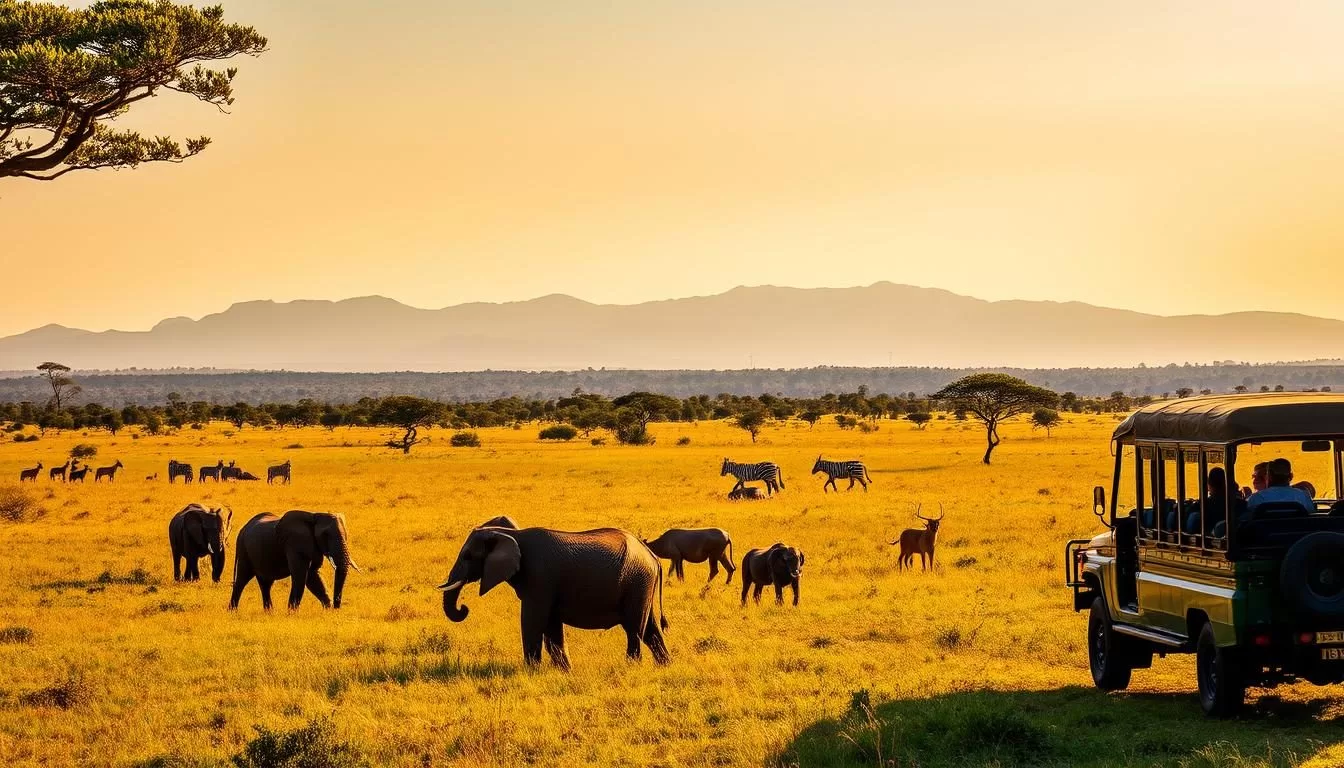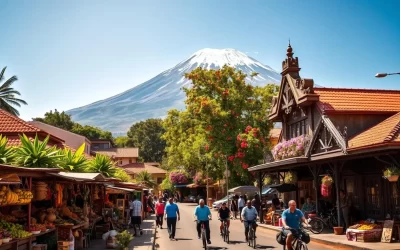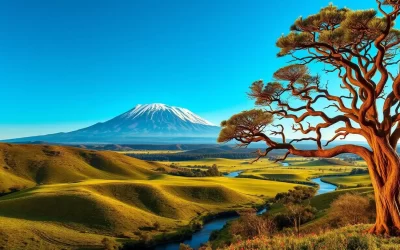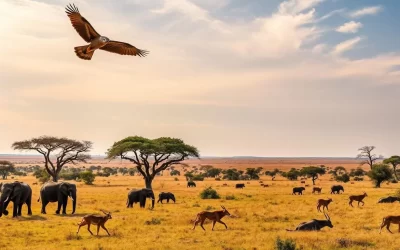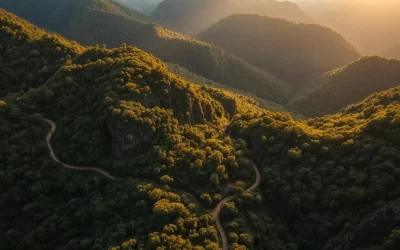Welcome to Mkomazi National Park, a truly spectacular wilderness in northeastern Tanzania. This safari destination offers a unique experience, away from the crowds, with its arid landscape and migratory herds.
You’ll have the rare opportunity to visit the Rhino Sanctuary and see the endangered black rhino up close. Our comprehensive guide will introduce you to the best activities and experiences this national park has to offer, from thrilling game drives to rare wildlife encounters.
Discover why Mkomazi is a special place for conservation efforts, particularly for endangered species like African wild dogs. By the end of this guide, you’ll understand why this park should be on your safari itinerary.
Discovering Mkomazi National Park: Tanzania’s Hidden Gem
Tucked away in Tanzania, Mkomazi National Park is a treasure trove of wildlife and natural beauty waiting to be explored. As you delve into the park’s details, you’ll uncover its unique characteristics and significance.
Location and Geography
Mkomazi National Park is situated in the northeastern part of Tanzania. It is part of the larger Mkomazi-Tsavo Ecosystem, a significant transboundary ecosystem in East Africa.
History and Conservation Efforts
The park has a rich history of conservation efforts, aimed at protecting its diverse wildlife and ecosystems. These efforts have contributed to the park’s current status as a thriving sanctuary.
Park Size and Ecosystem
Mkomazi National Park covers a substantial area, featuring a diverse range of ecosystems, including dry grasslands, acacia woodlands, and riverine forests. The park’s ecosystem is characterized by Acacia-Commiphora vegetation, supporting a wide variety of wildlife.
| Ecosystem Feature | Description |
|---|---|
| Dry Grasslands | Open areas with grasses, supporting grazing animals. |
| Acacia Woodlands | Areas dominated by Acacia trees, providing habitat for various species. |
| Riverine Forests | Forests along rivers, offering a unique habitat for wildlife. |
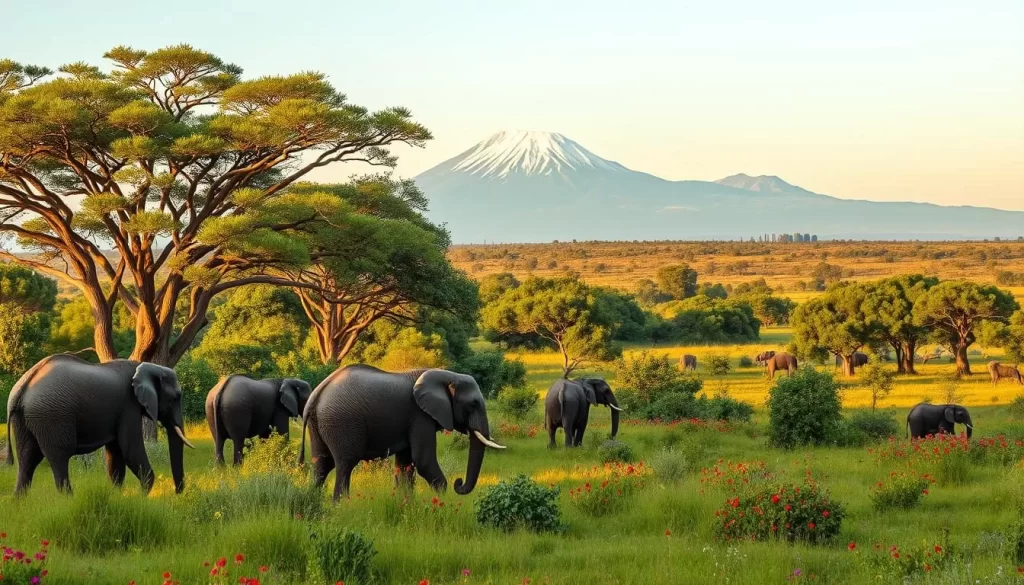
When to Visit Mkomazi National Park
Understanding the seasonal changes in Mkomazi National Park is crucial for planning your trip. The park offers unique experiences throughout the year, depending on whether you prefer wildlife viewing or bird watching.
Dry Season: Prime Wildlife Viewing
From June to October, Mkomazi National Park is in its dry season, making it an ideal time to visit for those interested in wildlife viewing. During this period, animals congregate around water sources, making them easier to spot.
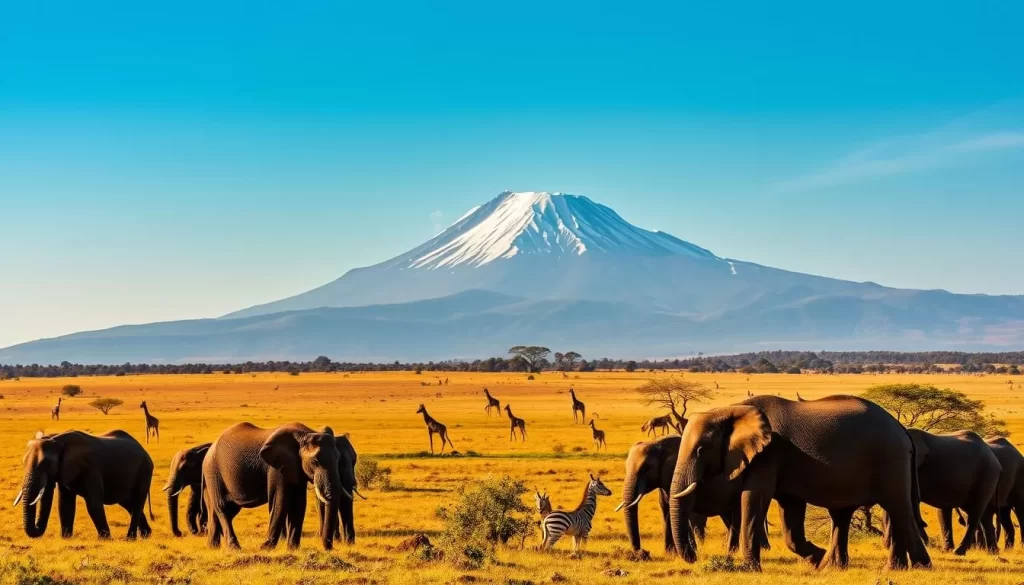
Green Season: Bird Watching Paradise
If you’re keen on bird watching, the months of November to April are fantastic because that’s when migratory birds make their appearance. Mkomazi transforms into a bird watcher’s paradise as the total bird species count reaches over 450 throughout the park. You’ll witness the landscape change dramatically during this green season, with lush vegetation and seasonal water bodies attracting diverse birds. The abundance of water during this season disperses the animals, requiring more patience during wildlife viewing.
How to Reach Mkomazi National Park
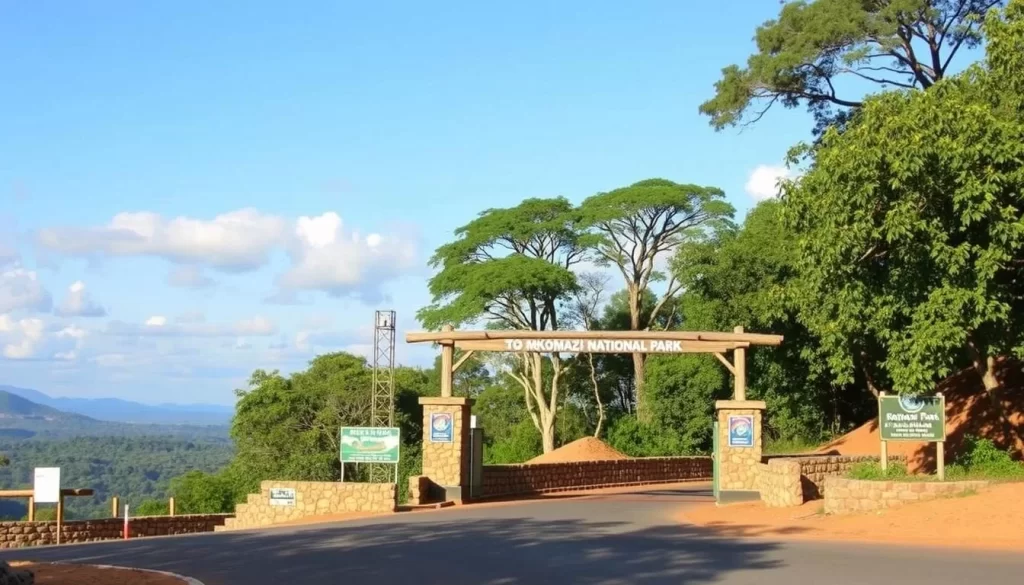
Mkomazi National Park is accessible by various means, ensuring a convenient journey for all visitors. Located in Tanzania, it offers multiple travel options to suit different preferences and time constraints.
By Road from Arusha
For those who prefer a more leisurely journey or are on a budget, traveling to Mkomazi National Park by road from Arusha is a viable option. The drive typically takes around 3 hours, depending on the road conditions and traffic. You can hire a vehicle or book a guided tour that includes transportation, making the journey part of your overall safari experience.
When you choose to drive, you’ll have the opportunity to enjoy the scenic views along the way, making the journey to Mkomazi National Park an integral part of your visit.
By Air to Kisima Airstrip
For a quicker and more exhilarating experience, flying to Kisima Airstrip is the best option. You can fly into Kilimanjaro International Airport (JRO), which is a major aviation hub in northern Tanzania, and then take a charter flight to Kisima airstrip. This option not only saves time but also offers breathtaking aerial views of Tanzania’s diverse landscapes, including the snow-capped peak of Mount Kilimanjaro.
Charter flights from Arusha Airport to Kisima airstrip are also available, reducing your travel time to approximately 45 minutes. It’s advisable to book your flights in advance, especially during peak tourist seasons, to ensure availability.
Wildlife Encounters in Mkomazi National Park
The wildlife in Mkomazi National Park is a true marvel, with numerous species calling this park home. As you explore the park, you’ll have the opportunity to encounter a diverse range of animals, from big game and predators to rare and endangered species.
Big Game and Predators
Mkomazi is teeming with big game and predators, making it a thrilling destination for any safari enthusiast. The park is home to an array of iconic African species.
Lions, Leopards and Cheetahs
The park’s grasslands and woodlands provide a habitat for majestic predators like lions, leopards, and cheetahs.
Elephants, Giraffes and Buffalo
In addition to the big cats, Mkomazi is also home to elephants, giraffes, and buffalo, offering a well-rounded wildlife experience.
Rare and Endangered Species
Mkomazi National Park is a sanctuary for several rare and endangered species, providing a safe haven for these animals to thrive.
Black Rhinos
One of the park’s conservation success stories is the protection of black rhinos, a critically endangered species.
African Wild Dogs
The park is also home to African wild dogs, another endangered species that benefits from Mkomazi’s conservation efforts.
Bird Watching Paradise: 450+ Species
Mkomazi National Park is a paradise for bird enthusiasts, hosting over 450 bird species. The park’s diverse habitats support a wide range of birds, from tiny sunbirds to massive ostriches.
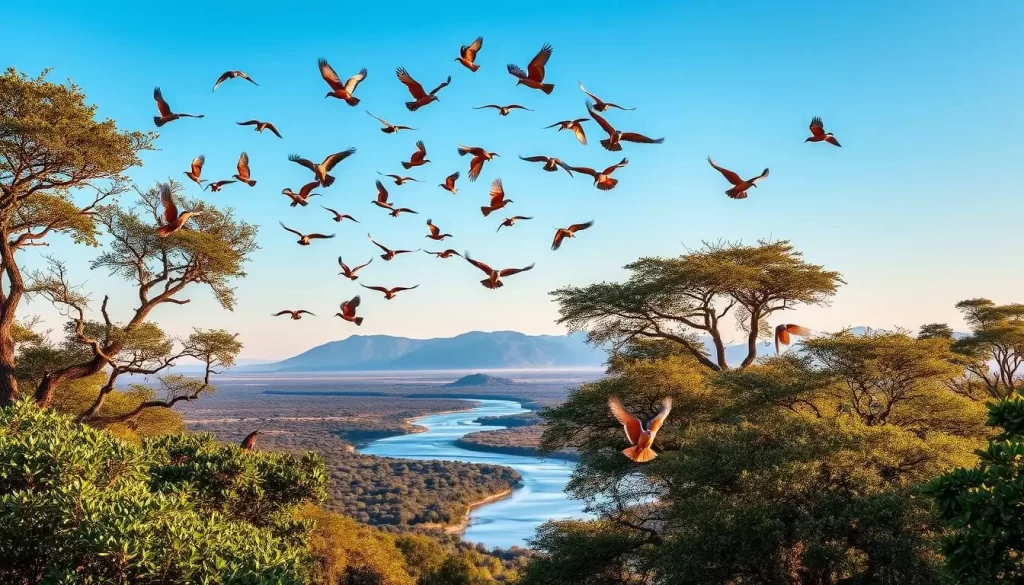
| Bird Type | Species Count | Notable Species |
|---|---|---|
| Endemic Birds | 5 | Somali Ostrich, Yellow-vented Eremomela |
| Migratory Birds | Numerous | Various European and Asian species |
| Resident Birds | Over 450 | Sunbirds, Ostriches, Violet Wood-Hoopoe |
The diverse habitats within the park, ranging from acacia woodlands to grasslands and seasonal wetlands, create multiple ecological niches that support this remarkable avian diversity. During the green season, the arrival of migratory bird species from Europe and Asia enhances the bird watching experience.
Mkomazi National Park, Tanzania: Best Things to Do – Top Picks
When visiting Mkomazi National Park, you’ll have the opportunity to experience some of Tanzania’s most exciting wildlife adventures. The park offers a range of activities that cater to different interests and preferences.
Game Drives Along the River

Game drives in Mkomazi National Park are a thrilling way to explore the park’s diverse wildlife. Along the river, you’ll have the chance to spot a variety of animals, including elephants, giraffes, and antelopes. The dry season is particularly good for game viewing as animals congregate around water sources.
Walking Safaris with Rangers

For a more immersive experience, consider a walking safari with experienced rangers. This activity allows you to explore the park’s flora and fauna up close, gaining insights into the ecosystem and spotting smaller wildlife that might be missed during a game drive.
Visiting the Mkomazi Rhino Sanctuary
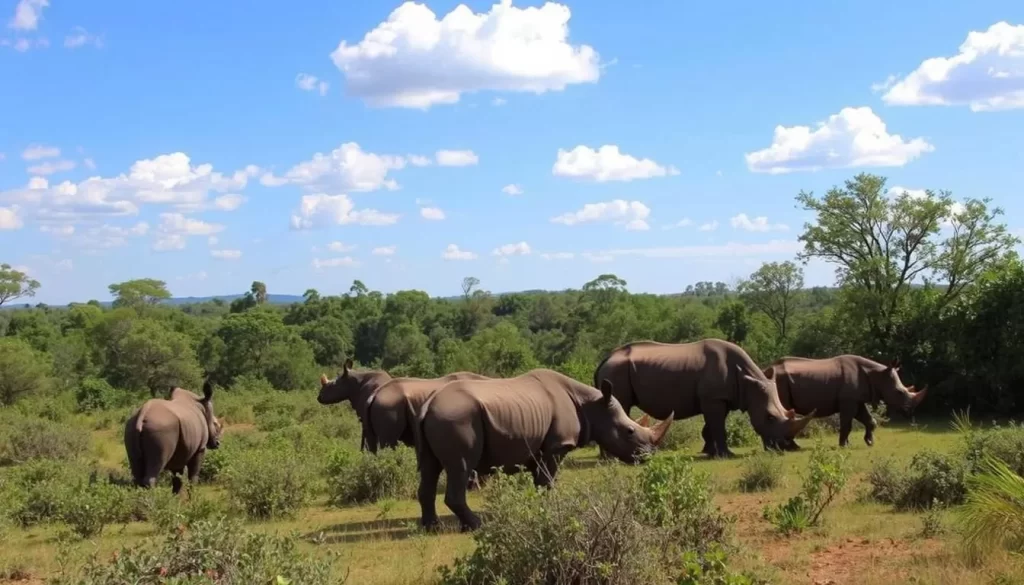
One of the park’s highlights is the Mkomazi Rhino Sanctuary, a conservation effort that has successfully rehabilitated black rhinos. By visiting the sanctuary, you contribute to conservation efforts and have a unique opportunity to observe these magnificent creatures. The sanctuary offers educational presentations and guided tours, providing insights into rhino conservation strategies and the daily operations of the sanctuary.
Visiting the Mkomazi Rhino Sanctuary gives you a rare chance to learn about and observe the critically endangered black rhino. Your visit supports conservation efforts, including anti-poaching patrols and community education programs.
Breathtaking Landscapes and Scenery
As you explore Mkomazi National Park, you’ll be struck by its breathtaking landscapes and diverse scenery. The park’s unique geography creates a visually stunning experience, with a variety of ecosystems that support a wide range of flora and fauna.

Pare and Usambara Mountains Views
The park is framed by the majestic Pare and Usambara Mountains, offering spectacular views that are a highlight of any tour. These mountains not only add to the park’s natural beauty but also create a variety of habitats for different animal species.
Ancient Baobab Trees and Acacia Woodlands
Mkomazi is home to ancient baobab trees and acacia woodlands, which are characteristic of its dry grasslands. This landscape is not only visually striking but also essential to biodiversity, supporting a wide range of plant and animal species.
Volcanic Mountains and Rainforests
The volcanic mountains within the park tell the geological story of East Africa, with their distinctive shapes creating dramatic focal points. In higher elevation areas, patches of rainforest contrast with the drier savannah, creating a unique place for various species to thrive.
During your visit, take in the views from elevated viewpoints to appreciate the mosaic of landscapes that make up Mkomazi National Park.
Conclusion: Why Mkomazi Should Be on Your Tanzania Safari Itinerary
For a truly authentic safari experience, consider visiting Mkomazi National Park. While it may not offer the same density of wildlife as Tanzania’s more famous parks, it provides a more intimate and uncrowded experience.
The park’s unique semi-arid landscape and conservation efforts make it an attractive option for travelers. By visiting Mkomazi, you’ll be supporting conservation efforts for endangered species and local communities.
With its stunning landscapes and rare wildlife, Mkomazi offers a memorable experience that’s hard to find in more crowded parks. Whether you’re a seasoned traveler or a first-time safari-goer, Mkomazi is a great addition to your Tanzania itinerary.
